Finishing the floor on the balcony implies taking into account the purpose of the room and the features of its design. The coating is selected in such a way that it does not lose its characteristics under the planned operating conditions.
Features of balconies
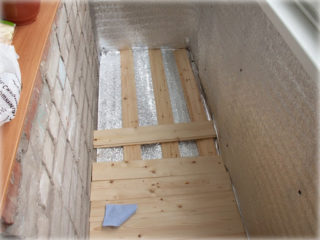
If this room in the apartment is planned to be used for storing homework and other things, the finishing of the balcony floor should be unpretentious. It makes no sense to use refined materials that are demanding to maintain, but the ability of the coating to withstand high static and dynamic loads is of particular importance.
For a cold balcony, a special coloring composition is suitable, which almost does not give an additional effect on the base and is well tolerated by weather factors. Tiles can be laid in a glazed room. A balcony with such functionality allows the refusal of insulation.
If it is decided to make a work area or use the balcony as a resting place, the floor should be easy to clean, not emit substances harmful to health and withstand stress well. Decking is a good option in this case.
The most stringent requirements are imposed on the material with which the floor is covered in an open room in terms of resistance to environmental phenomena. It should not lose its properties from the ingress of water, fade from direct sunlight, peel off during frost.
If the balcony is glazed but not heated, the owner can choose almost any of the common materials. Only carpet and most types of laminate are definitely not recommended in this case.
Preparing the foundation for work
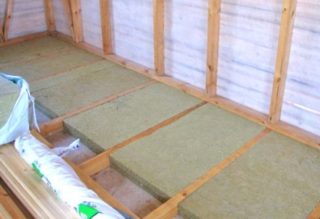
Before making the floor on the loggia, you need to determine how much coverage is required for its arrangement, and purchase the required stock of material. Before installing it, the floor surface must be prepared.
The step-by-step instructions do not depend on the type of coverage:
- The old coating needs to be removed. If waterproofing was installed during its installation, it must also be removed. Debris and dust are also removed.
- The plane is leveled with a wet tightening compound. Even a thin screed loads the substrate quite strongly, therefore the final layer should not be too thick (maximum 20 mm).
- A primer is applied to the surface.
Each applied layer of any composition must be allowed to dry first. The time required for this is indicated on the package with the mixture.
When the primer is dry, the surface can be covered with paint or veneer.
Open balcony flooring
The floor on the open balcony can be finished with any durable coating that is resistant to environmental factors. In this case, it makes no sense to organize heating.
Ceramic tile
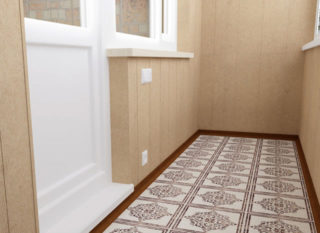
Tile is a cold coating suitable for balconies without an insulation system: both open and glazed. In addition to ceramic, tiles can be laid. Products with a rough surface are better suited - in this case, there is less chance of slipping, which is especially important if precipitation falls on the balcony or small children are regularly in the room.
If you plan to put furniture or other heavy objects, you need to purchase high-strength coatings (class 4-5). For a cramped balcony, small-sized tiles of a light color are suitable - they will help to make it visually more spacious.
It is worth purchasing the entire required amount of material with some stock at a time, since the color may differ slightly for different batches.
Decking or garden parquet
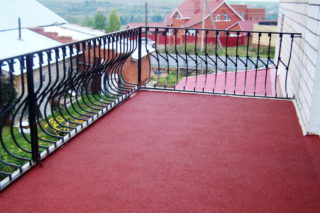
Ordinary parquet is not very suitable for a balcony covering due to its susceptibility to moisture, but terrace boards treated in a special way withstand the ingress of water much better. The material is wear-resistant and can withstand heavy loads. To sheathe the surface with them is within the power of a person without special skills.
It is necessary to mount the material on a crate impregnated with anti-septic compounds. Such a floor covering has good thermal insulation properties, the surface will not be as cold as in the case of tiles.
Concrete paint
Special coloring compositions are suitable for an unglazed balcony. It is easy to apply such a mixture, it does not lose color under the influence of ultraviolet radiation and calmly tolerates moisture. A rubber-based compound designed specifically for a balcony without glazing is suitable. It is applied with standard tools (spray gun, brush, roller). The prepared surface must be perfectly level. The method of applying a particular paint is indicated on its packaging.
Coverings for a glazed loggia
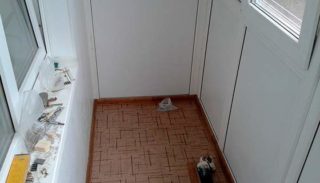
On the glazed balcony, roll or bulk insulation is mounted (the latter is used for dry screed). If you equip such a balcony with constant heating, it is suitable for year-round use as a study or recreation area. When planning to equip a room for such a purpose, you need to make sure that the base can cope with all the static and dynamic loads created by the coating, furniture and people inside.
For heating, electrical appliances or an electric floor heating system can be used. The latter option is not suitable for cladding materials containing wood or mounted on a wooden crate: they can ignite.
Linoleum
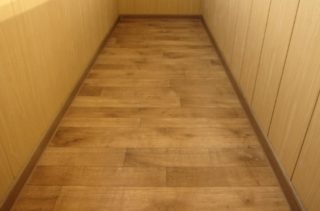
The floor on an unheated balcony can be covered with special linoleum, equipped with a layer of thermal insulation, and ordinary products are suitable for a heated room. The material is sensitive to low-temperature environments - this makes it brittle. It also does not tolerate moisture. Getting under the flooring, water, having no possibility of evaporation, stagnates under it. This environment attracts mold and mildew.
Laminate
If the balcony is not planned to be insulated, they buy products marked with numbers 34 or 33. They are more expensive, but they easily tolerate moisture and temperature extremes. It is allowed to put other types of material on a warm balcony, while it should be remembered that wet cleaning of such a floor cannot be done. Grades 33 and 34 can be washed with a non-aggressive detergent, but it is better in this case to limit yourself to sweeping.
Flatness of the surface and high-quality waterproofing are important for laying laminate flooring.
Pros and cons of balcony coatings
Coloring compositions for an open balcony they are easy to apply, they serve for a long time without losing color, they have no restrictions on the methods of cleaning, but the floor in this case will be cold. It is worth going out on it in shoes, otherwise there is a risk of cold feet.
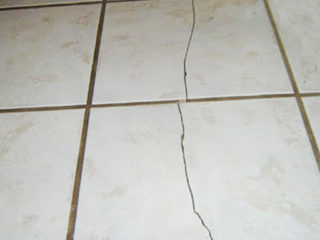
Ceramic and tiled tile it is water-resistant and good frost-tolerant. There is a large assortment of tile products - monochromatic, with ornaments, mosaics, artistic compositions. This allows you to finish the floor to your liking. Among the minuses, one can note the weight of the products and the screeds for them.
The heaviest common tile material is porcelain stoneware. It is not recommended to use it for a balcony room. Before laying any tiles, make sure that the base will withstand the full planned load.
The tile flooring is fragile. If a large, heavy object falls, cracks may appear on the items.
Single-fired ceramic products with sufficient roughness are best suited for the balcony. Its performance characteristics are optimal for these conditions: the minimum porosity prevents moisture penetration, the texture reduces the likelihood of slipping.
Laminate products are good for their aesthetic appearance, ease of installation. Due to the lightness of the material itself and the absence of the need for a screed (if the floor is even), no unnecessary load is created on the base plate. The product is resistant to fading. Caring for it is limited to regular sweeping, it is not worth washing it unnecessarily. Laminate Grades 33-34 can be washed with mild soap. It is better to do this zonal, treating areas with heavy dirt.
The disadvantage of the coating is the lack of soundproofing qualities: residents will hear steps.
Due to the whimsicality to external conditions, the laminate is mounted only on glazed balconies, laying insulation. It can be expanded polystyrene or cork material. In addition to its direct function, insulation helps to level the floor and improve sound insulation.
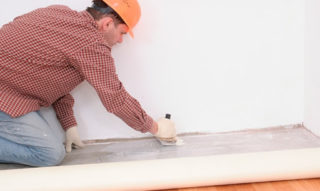
Linoleum differs in ease of installation, lack of need for manipulation of building mixtures (if the slab does not have significant cracks or irregularities). All you need is special glue. So that moisture does not accumulate under the finish, linoleum is cut into large (taking into account the dimensions of the room) pieces.
The surface of the material itself transfers water well, but it should not be allowed to get under the coating.
The product wears out quickly, especially if people are regularly on the balcony.








